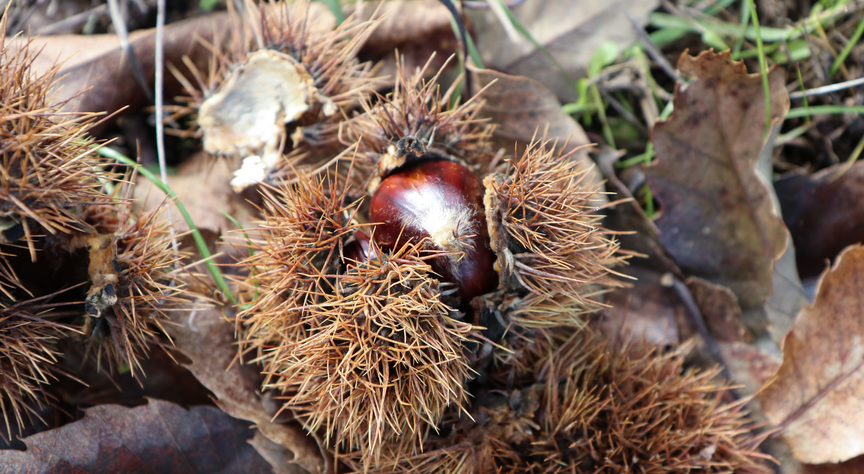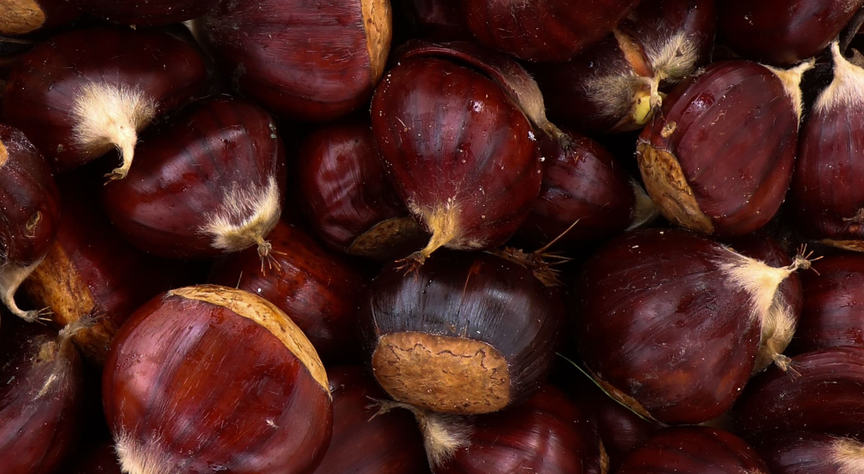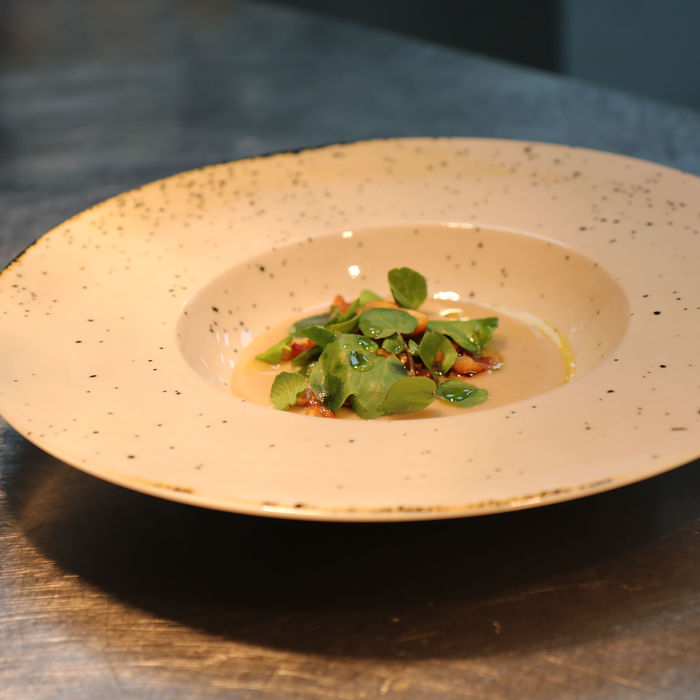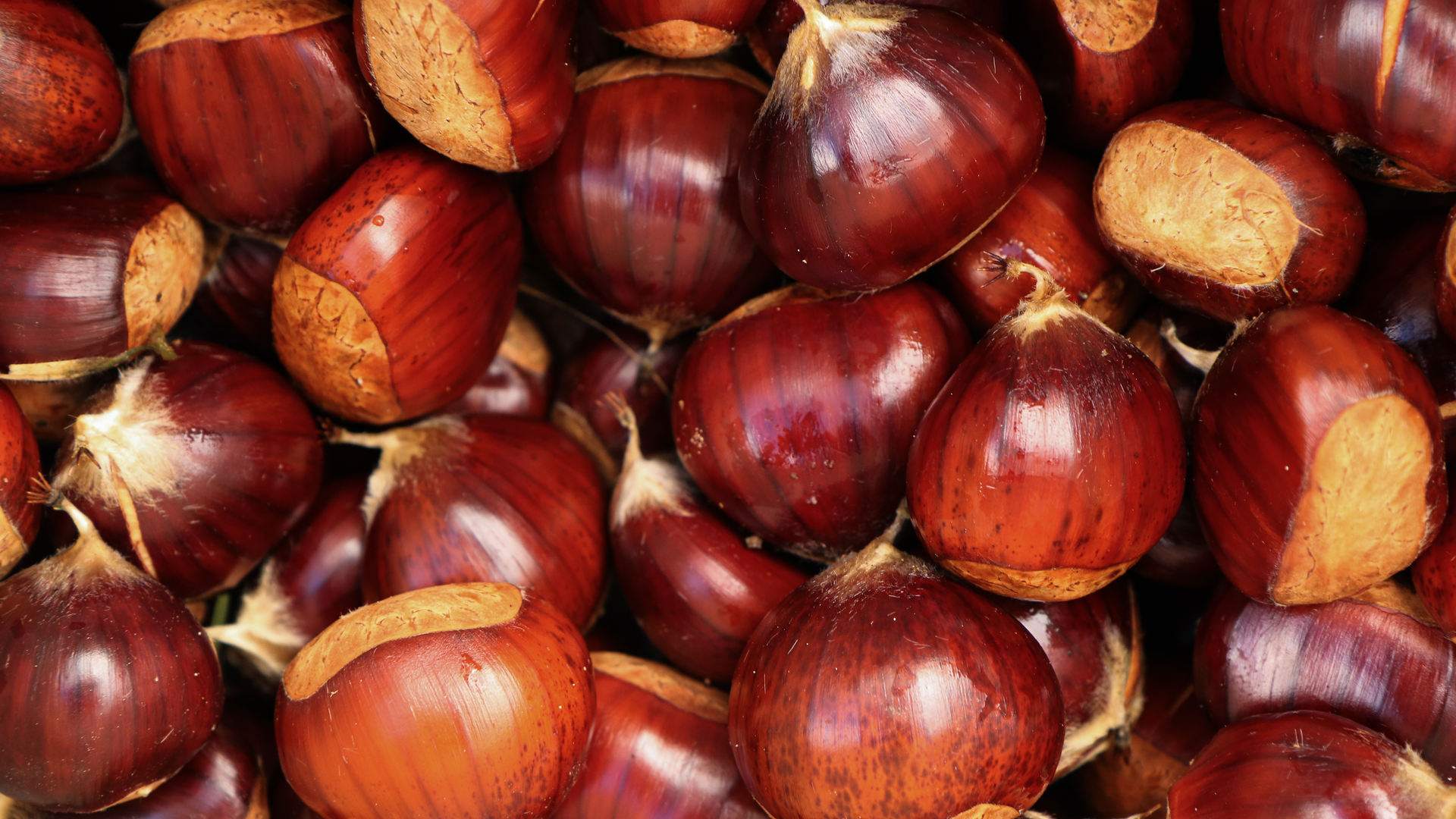
Chestnut from Soutos da Lapa PDO
Chestnut from Soutos da Lapa PDO
Consecrating tradition and quality, the Chestnut from Soutos da Lapa PDO represents a unique gastronomic heritage, originating from the chestnut tree of the Longal and Martaínha varieties.
The Protected Designation of Origin title guarantees the excellence of the fruit, whose batches must be homogeneous in origin, variety, quality, calibre and state of maturity.
The production of these chestnuts, integrated into the meticulously delimited geographical area, comprises stages from cultivation to harvest. Whether by mechanical or manual methods, it takes place from the ground, gathering the fruit by variety into batches. The guarantee of homogeneity is reflected in the difference in weight between the 10 smallest and 10 largest nuts in a 1kg sample, not exceeding 80 grams.
The Soutos da Lapa PDO chestnut is distinguished by its vibrant colours: reddish and shiny for the Longal variety and light brown with a medium shine for the Martaínha. In addition to the attractive appearance, the flavour is the star, with a balanced softness, a smooth and remarkably sweet taste.
The history of the Soutos da Lapa PDO chestnut is intertwined with the region, the chestnut tree being a central figure in the local economy, crafts and cuisine. Recognised as the ‘bread tree’, its presence is immortalised by authors such as Gil Vicente and Aquilino Ribeiro. The festivals and fairs dedicated to chestnuts, such as the São Martinho Festival and the São Simão Chestnut Festival and Fair, bear witness to the cultural importance of this delicious Portuguese gastronomic heritage.
Curiosities
It is considered ‘sweeter’ compared to other varieties
The flavour of the Soutos da Lapa PDO chestnut is slightly sweet and it is predominantly used to make jams and syrups. However, it is also possible to prepare it boiled or roasted, incorporating it into various recipes, such as chestnut puree, chicken with chestnuts, chestnut mousse or even chestnut flour, the latter of which plays an essential role in various desserts.
It must be well preserved to preserve its assets and unrivalled flavour
At home, chestnuts should be kept in a cool, dry place so they don't lose their quality. Naturally, they can be kept for about a month and a half.
It has already been used as a bargaining chip
The Martaínha Longal variety, grown in the Portuguese districts of Viseu and Guarda, was even used as currency in the 13th century.
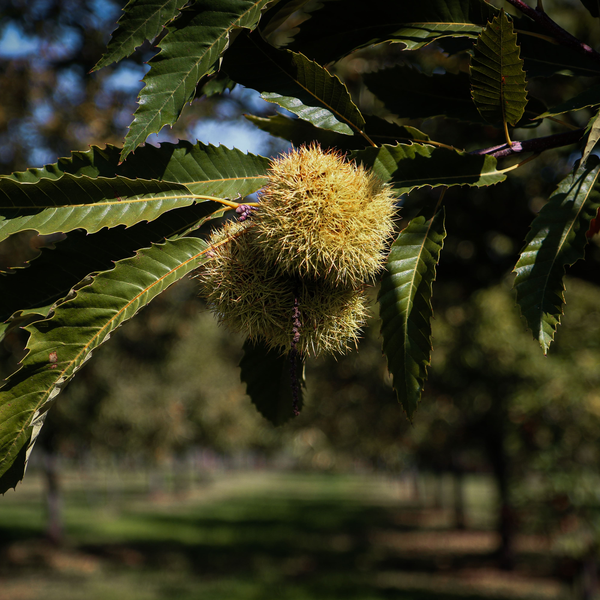
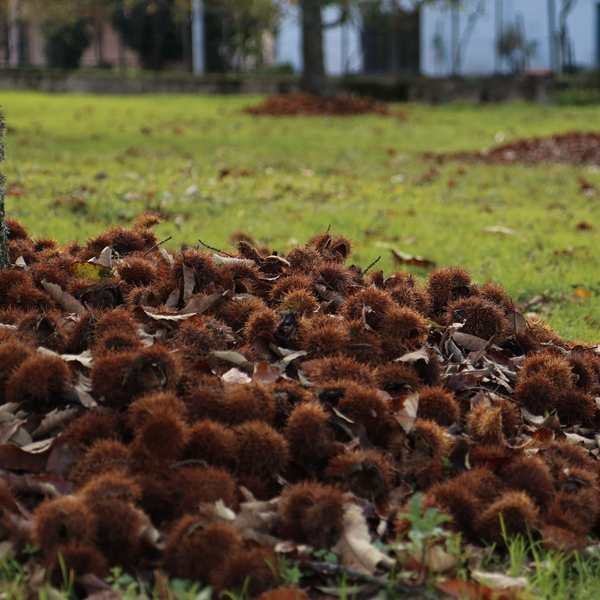
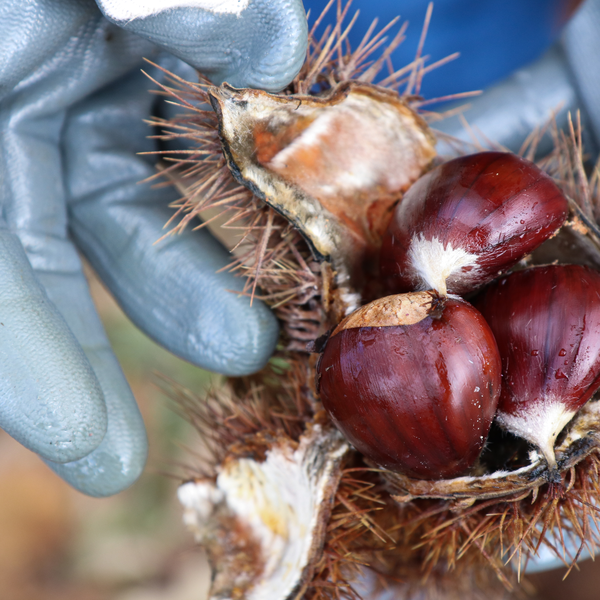
Know our
